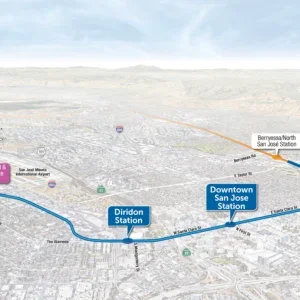Momentum is mounting for plans to construct an undersea tunnel connecting Japan and Korea. A 200km undersea tunnel running from Busan in South Korea to the Japanese Island of Kyushu would link the two countries by a high-speed rail line.
Discussions on the topic have been taking place for almost thirty years, but only now is the idea being given serious consideration.
Construction costs are estimated at around Y60 trillion (US$52.1 million) to Y100 trillion (US$86.9 million).
It is thought the project would take between seven and 10 years to construct.
A tunnel building committee was established this month by a research group from the two countries, according to Japanese Prime Minister Yukio Hatoyama, who first revealed the plans late last year on a visit to Seoul.
The Korea Japan Tunnel Project Association in Busan and the Japan-Korea Tunnel Research Institute, a non-profit foundation in Tokyo, are leading the research.
Studies on the tunnel have been initiated mostly by the private sector, according to local media reports.
Government support is expected to follow, as the scope for boosting economic development is revealed.
Researchers, politicians and entrepreneurs, who recognise that the tunnel could boost economic development in the region as well as cementing international relations between the two nations, are championing the idea.
The tunnel will facilitate bilateral trade, which rose from approximately US$40 billion in 1999 to more than US$89 billion in 2008, and will reduce freight and shipping costs. It will also be a boost for the Eurasia transportation link.
Speaking to local media, Prof. Shin Jang-cheol of Seoul’s Soongshil University said: “The tunnel will stimulate business, ease tension and promote political stability in East Asia. It will also have a positive impact on the reunification of the Korean Peninsula.”
In 2009, approximately 20,000 people travelled between the countries daily.
One economic issue that will be faced by rail companies utilizing the tunnel is that of different sized rail gauges, if the rail system is eventually connected to the Trans-Siberian Railway via China. Russia uses a 1520mm gauge, while Korea uses 1435mm and Japan 1067mm.







